The Internet of Things (IoT) has transformed countless industries, with its most profound impact seen in healthcare. IoT, a network of interconnected physical devices, vehicles, home appliances, and other items embedded with sensors, software, and connectivity, enables these objects to gather and share data seamlessly.
In healthcare, this innovation translates into a multitude of connected devices and systems that are revolutionizing patient care, streamlining hospital operations, and aiding in critical medical decisions. The focus is not merely on connecting devices but on fostering a data-driven care environment.
From smart wearables that provide real-time monitoring of vital signs to AI-powered smart hospitals that enhance resource allocation, IoT is driving healthcare towards greater efficiency, personalization, and proactivity. This article delves into how IoT is reshaping healthcare, improving patient outcomes, and the promising future of this groundbreaking technology.
IoT-Enabled Remote Monitoring and Patient Care
Wearable Health Monitors
Wearable health monitors are among the most prevalent and impactful applications of IoT in healthcare. Devices like smartwatches and fitness trackers are equipped with advanced sensors that continuously monitor vital signs such as heart rate, blood pressure, and oxygen levels. This real-time data collection empowers healthcare providers to closely monitor patients’ health status without requiring constant physical presence.
For example, wearable sensors can help prevent falls and track the location of patients with Alzheimer’s and dementia, ensuring their safety and well-being.
Home-Based Care Devices
Beyond wearables, IoT has revolutionized home-based care by enabling the development of devices that bring healthcare directly into patients’ homes. These include smart home systems integrated with health monitoring equipment, such as blood glucose meters, blood pressure monitors, and even IoT-enabled hygiene devices.
These tools automate the collection and analysis of health data, transmitting it to healthcare providers in real time. This setup not only enhances patient comfort but also reduces the burden on healthcare facilities by facilitating remote care and enabling early intervention when needed.
Impact on Chronic Disease Management
IoT-based remote monitoring has proven particularly valuable in managing chronic diseases. By continuously tracking patients’ health metrics, IoT devices can identify early warning signs of complications, enabling timely medical interventions.
For instance, IoT wearables can monitor fitness data, daily activity, and calorie intake—metrics that are essential for managing conditions like heart disease. This data-driven approach allows healthcare providers to correlate various health conditions and design more effective treatment plans. Furthermore, IoT devices can forecast potential health issues, such as asthma attacks, and alert both patients and healthcare providers, significantly improving the management of chronic diseases.
Enhancing Hospital Operations Through IoT
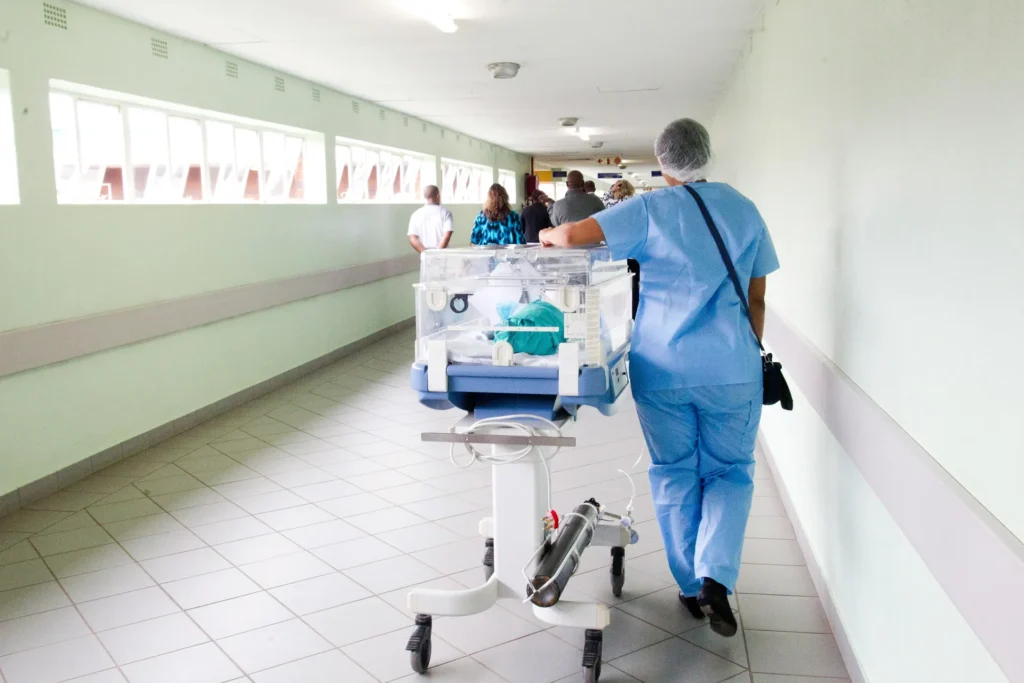
Asset Tracking and Management
IoT has revolutionized asset tracking and management in hospitals, addressing inefficiencies that have persisted for years. By deploying IoT-enabled sensors and Real-Time Location Systems (RTLS), hospitals can achieve remarkable accuracy in monitoring and managing medical equipment, supplies, and personnel. For example, Hull University Teaching Hospitals NHS Trust utilizes an RFID system to track 70,000 assets, such as syringe pumps and nebulizers. This innovation saves staff an average of 35 hours per year, time that would otherwise be spent searching for equipment.
Patient Flow Optimization
IoT technology is instrumental in optimizing patient flow within hospitals. Through RTLS tags on patients, staff, and equipment, hospitals can streamline workflows and eliminate bottlenecks.
This system enables the tracking of patient movement across various departments, ensuring they receive timely care and reducing wait times. Additionally, IoT data provides valuable insights into equipment utilization patterns, helping hospitals allocate resources more effectively and manage inventory levels efficiently. The result is smoother operations, cost savings, and improved patient care.
Enhanced Data Security and Compliance
While IoT enhances hospital operations, it also brings challenges related to data security and compliance. Fortunately, IoT solutions can be designed with robust security measures to safeguard sensitive patient data.
For instance, IoT devices can integrate advanced security protocols to ensure that the vast amounts of collected data are encrypted and securely transmitted. Moreover, IoT systems assist hospitals in meeting regulatory requirements by automating maintenance and compliance checks for medical devices.
This ensures that all equipment is properly maintained and functions within established standards, enhancing patient safety and reducing the risk of non-compliance.
Emerging Trends and Future Predictions in IoT for Healthcare
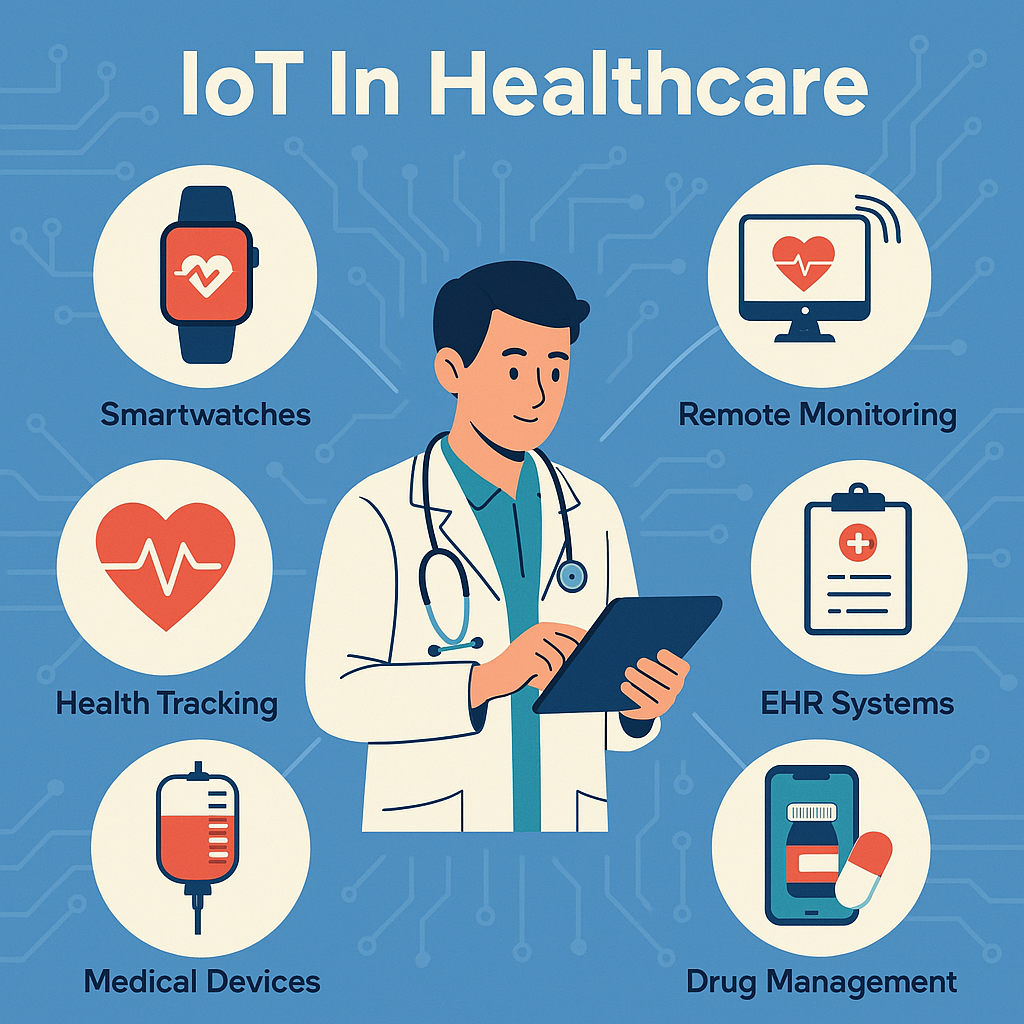
AI and Machine Learning Integration
The integration of Artificial Intelligence (AI) and Machine Learning (ML) with IoT is one of the most promising emerging trends in healthcare. This synergy allows IoT devices to go beyond basic data collection, enabling predictive analytics and informed decision-making.
AI algorithms can process vast amounts of real-time data generated by IoT devices, identifying patterns and anomalies that may signal potential health issues. For example, AI can analyze data from wearables and biosensors to predict complications in patients with chronic illnesses, empowering healthcare providers to take preventive actions.
Expansion of Telemedicine
Telemedicine is poised for significant growth, thanks to advancements in IoT and connected devices. By enabling remote monitoring and real-time data collection, telemedicine services can become more personalized and effective. IoT-enabled devices can transmit vital signs and other health metrics directly to healthcare providers, facilitating remote consultations and continuous care.
This growth in telemedicine is particularly impactful for rural or underserved areas, where access to healthcare facilities is often limited.
Challenges and Considerations
Despite its promising future, IoT in healthcare faces several challenges and considerations. One major concern is data security and privacy. The sensitive health data generated by IoT devices must be safeguarded against cyber threats and comply with regulatory standards.
Additionally, ethical considerations such as patient consent and the potential for bias in AI algorithms must be addressed. Striking the right balance between technological progress and protecting patient rights is essential for the widespread adoption of IoT in healthcare.
Conclusion
In conclusion, the integration of IoT in healthcare has ushered in a new era of personalized, efficient, and proactive care. From remote monitoring and patient flow optimization to asset management and enhanced data security, IoT has transformed various facets of healthcare. Key benefits include improved patient outcomes, reduced healthcare costs, earlier disease detection, and better coordination of care.
As IoT continues to evolve with AI and machine learning, it is vital for healthcare providers to embrace these technologies to enhance patient care and operational efficiency. By leveraging IoT, we can create a more connected, data-driven, and patient-centric healthcare system for the future.
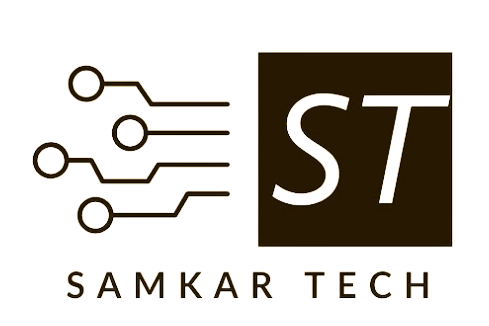
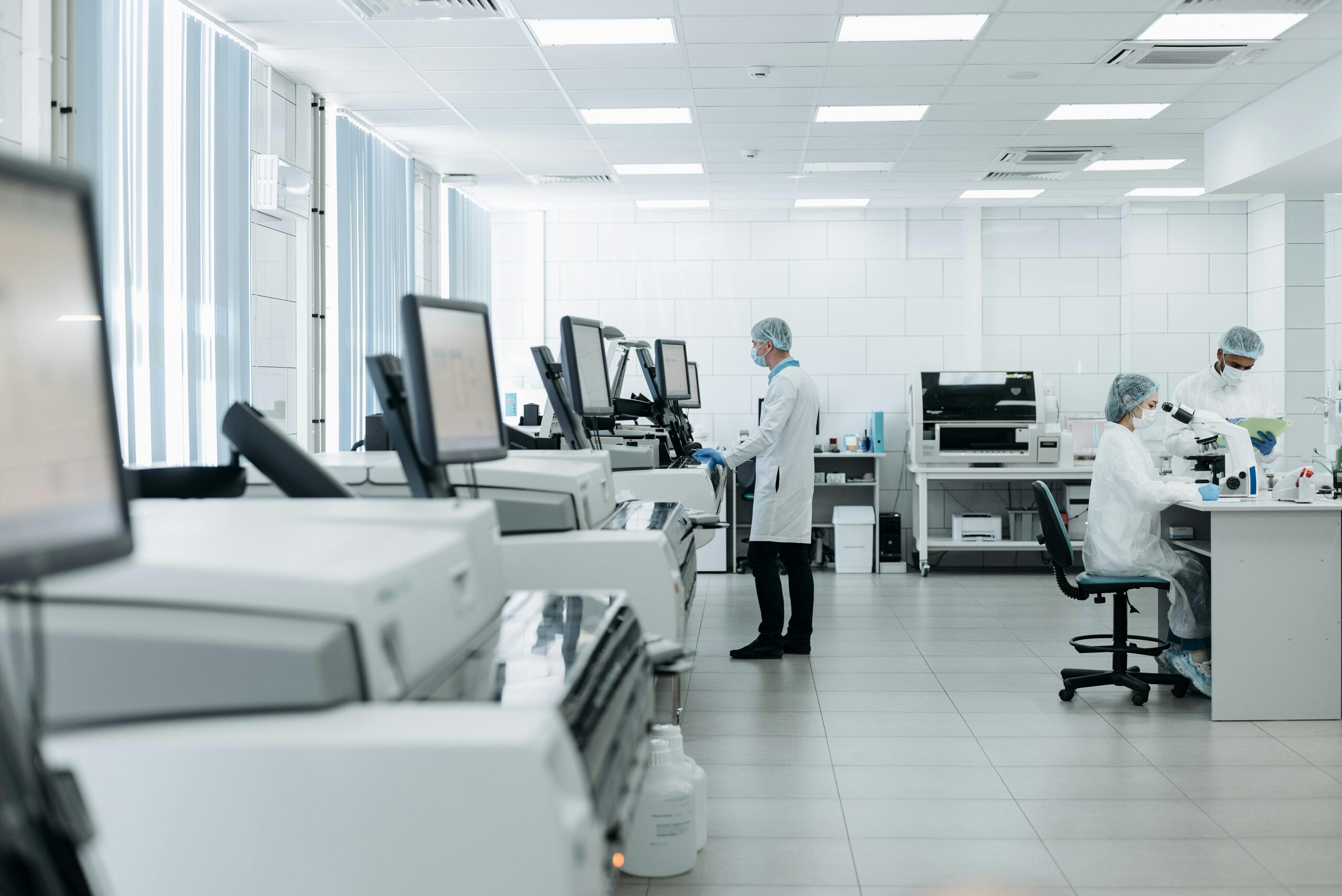
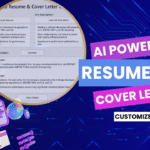


Discussion (0)
Share Your Thoughts